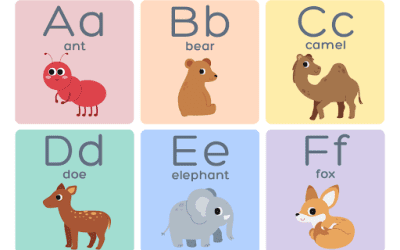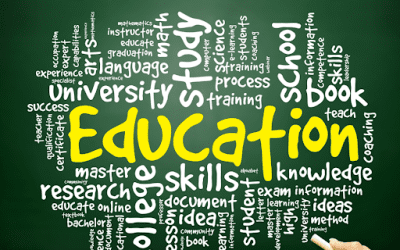While some SEL programs face criticism from states and parents, a need for them remains. For high schoolers, effective SEL materials and products lack focus for them. Many high school students use products geared for younger grades. Therefore, these products do not address the social status that high school students experience in their teen years. Ineffective products lead to poor results. Providers and publishers consider the methods below to integrate into your products and materials for social-emotional learning.
What is Social-Emotional Learning?
CASEL, an organization that sets SEL standards believes that social-emotional learning provides a foundation for education and people development. They explain how SEL creates a process young people and adults experience. They learn “to develop healthy identities, manage emotions and achieve personal and collective goals, feel and show empathy for others, establish and maintain supportive relationships, and make responsible and caring decisions.” Students discover how to balance self-awareness. Moreover, they begin to learn “who they are,” while working collaboratively with their peers. Students gain knowledge about empathy, decision-making, and goal setting. Some people believe SEL as the first step toward emotional intelligence (EQ) because students learn how to acquire it.
What’s Missing in Social-Emotional Learning Products for High Schoolers?
The transition to high school challenges many young teens. During this age, they learn independence and interdependence. They might experience a large-population school for the first time coming from a smaller middle school. They must manage a new social environment, academics, and their own fluxing characteristics of body and mind. Mostly, students experience accountabilities at a new level. The ninth grade makes or sadly breaks a student. Teens who pass this grade will likely graduate from high school. Therefore, social-emotional learning materials and products focus on these characteristics and experiences to improve student outcomes.
Address the Key Concepts for Social-Emotional Learning
Many social-emotional learning interventions utilize CASEL’s five key concepts:
- seeks self-awareness to understand well-being, recognizes one’s feelings, promotes self-efficacy and optimism, and assesses strengths and challenges
- notices and connects to social-awareness by respecting diversity, understanding norms of social behavior for home, school, and community
- employs responsible decision-making to act ethically, consider social and community actions, and understand one’s actions
- applies relationship skills to settle conflicts and collaborate with diverse groups and individuals
- uses self-management to understand how to regulate emotions, set goals, and manage stress
These interventions impact students by helping them decrease depression, anxiety, aggression, and substance abuse.
Which Social-Emotional Learning Interventions Should Publishers Target?
Most importantly, publishers can integrate these key concepts, focusing on different interventions. Therefore, the strategies, lesson plans, discussions, and so forth should be geared at the high school level and not just be a simple upgrade from elementary SEL products. Utilizing these interventions indicates increased engagement and outcomes for social-emotional learning products.
Mindfulness Interventions
Clarke et al. (2021, 31-34), in Adolescent Mental Health (a systemic review on the effectiveness of schools-based interventions), analyzed and identified multiple studies of meditation and mindfulness interventions. Some studies did not show an impact, while others did for issues like suicide. Likewise, studies indicated positive results for promoting optimism. Thus, mindfulness and meditation demonstrate an intervention that publishers could integrate into their products.
Targeted/Specifically Designed Interventions
As cited in Clarke et al. 2021, 37, specific programs show promise as an intervention. A program called MindOut, comprised of 13 weekly sessions of various activities, was a school-wide approach based on CASEL’s five key concepts. The program targeted 32 disadvantaged schools in Ireland. With the program outcomes, it helped students (15-18) with their social-emotional learning skills. The results show a school-wide social-emotional learning program can be successful, especially for older, disadvantaged youths. Overall, publishers collaborating with school district leaders, can design programs, targeting different schools and their various demographics.
Digital Interventions
Publishers can build or use online interventions for social-emotional learning. MoodGym, a product based out of Australia, uses CBT (cognitive-based theory) based on different modules like feelings, thoughts, unwarping, destressing, and relationships. Programs integrating digital elements showed positive results in the short-term and long-term (Clarke et al. 2021, 38). While digital apps may not be better than in-person programs, they provide a low-cost solution. Apps like this one and others in the US like MindDoc or NotOk could be used with an SEL program.
“It’s clear that the edtech industry does not sufficiently think about the needs of classroom teachers. The situation is analogous to restaurants not thinking about diners. Silly!”
~Andrew Pass, Visionary
Other Elements to Consider When Building SEL Products and Materials
Build SEL Programs That Target the Teen Persona
Many SEL products deliver an aged-up version of an elementary product. Delivering a product that target teen problems and issues will be more effective for publishers. Therefore, leaders work with their teams to develop sound research. Start with the teens and high school teachers to understand what they desire and need in the classroom for social-emotional learning. Andrew Pass, Founder, and Visionary of A Pass Educational Group explained how edtech companies lack understanding of K-12 classrooms: “It’s clear that the edtech industry does not sufficiently think about the needs of classroom teachers. The situation is analogous to restaurants not thinking about diners. Silly!” Therefore, to be effective, publishers focus on the needs, barriers, and problems that teens face. Publishers will interview the teachers too. It will help them build stronger social-emotional learning products for K-12 classrooms.
Develop Professional Development Programs for Staff
A study on SEL curriculum at two high schools noted the advantages of professional training (PD). The staff was trained ahead of the school year to understand how to apply and use the curriculum. These trainings addressed points like trauma, so teachers would know what to expect in the fall. Therefore, publishing leaders package PD within their products to help teachers inculcate SEL practices. Additionally, integrating the training within the product assists teachers and schools that lack funding or staff for professional development. Moreover, providing sources on how to develop rubrics and lesson plans aids teachers. The professional development will support a school’s vision for social-emotional learning. Besides that, these schools will need to establish a clear vision and framework to support SEL.
Tout the Benefits of SEL to District Buyers
Some do not realize that social-emotional learning programs have a cost-benefit. According to CASEL, every dollar invested in an SEL program yields an 11 dollar return. Additionally, students in SEL programs show improved academic performances. In studies, secondary teachers noticed a benefit when teaching SEL concepts. Yet, many secondary teachers lacked support from leadership. Some teachers were unsure if their districts or states supported SEL curriculum. To improve these points, publishers and providers promote clear SEL messaging. Moreover, stronger product production could yield more buy-in from high school teachers and leaders.
Align SEL with Competency-Based Learning
Besides that, the mixing of educational strategies and methods continues. From online learning to flipped classrooms to hybrid to project-based learning, schools might fuse or blend these methodologies. One mix uses competency-based learning (CBL) with social-emotional learning (SEL). CBL emphasizes learning from the student’s perspective (personalized learning). Thus, mastery learning becomes a good fit to teach SEL because CASEL’s 5 concepts emphasize self-management and self-awareness. Because students can learn at their own pace, they will apply SEL competencies. Additionally, CBL cohorts help high school students at different levels with real-life situations like managing stress and peer pressure. Yet, publishers ensure the rubrics match teens’ expectations—make them teen-friendly, create single-point rubrics, and create and embed training within the product.
To sum up, students continue to face many mental health challenges, especially during their teen years. While some states or parents may oppose social-emotional learning, a need exists. The pandemic illuminated ongoing issues such as the stress that students face, especially at the high school level. Specific interventions for mindfulness, focused programs, and digital engagements can be integrated into an SEL program or product. Moreover, products with CASEL’s five key concepts yield positive outcomes. Most importantly, publishers should tout the SEL benefits, focus on the teen persona, and provide professional development. Mixing different methods and deliveries such as SEL and CBL provide a different way for high school students to learn.




